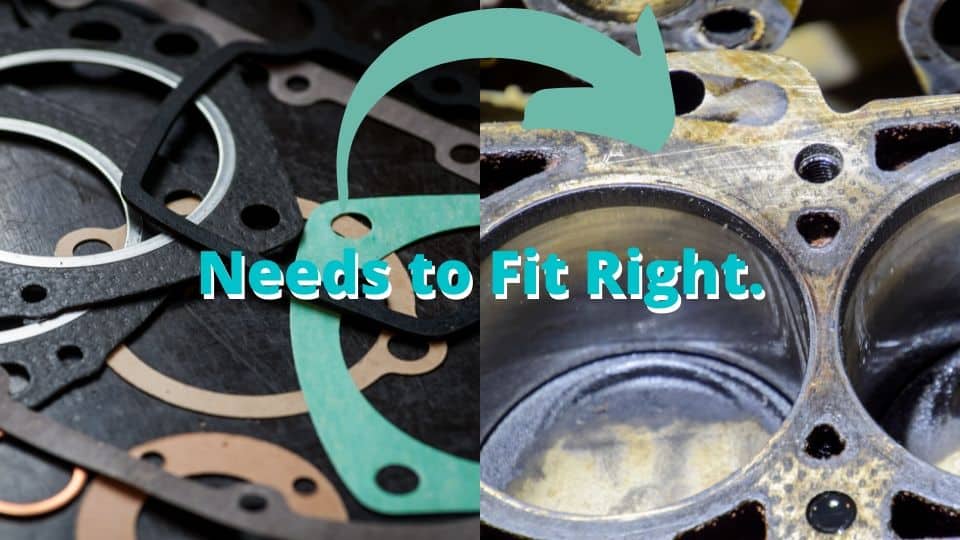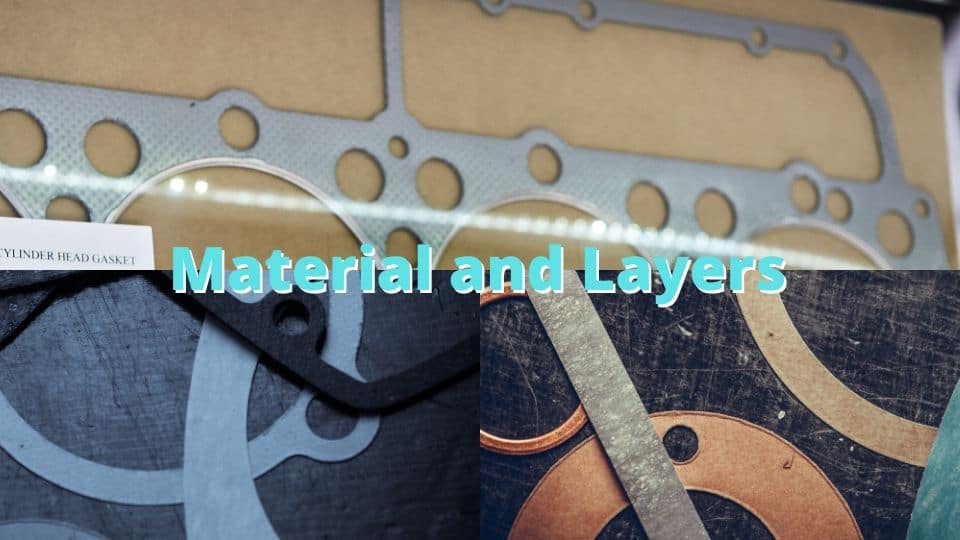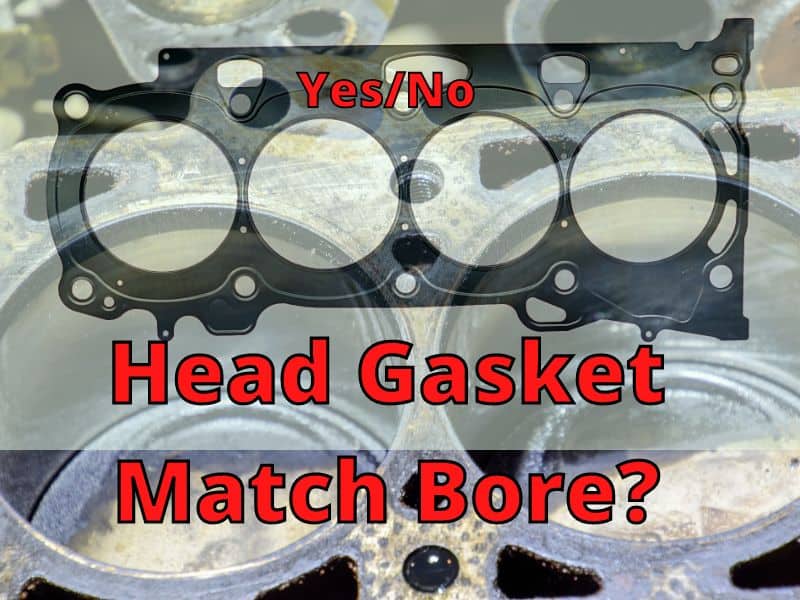For someone that doesn’t build race cars every day for a living, the process of selecting the right parts for an engine build within a given budget can sometimes be overwhelming. It usually starts with having a dream car that you always wanted or inheriting that classic oldie but goodie that you want to revive some life into your true classic. Then you decide to go beyond the dreaming phase finally, and you end up with a beautiful engine block sitting in the garage, a wad of cash for parts and accessories burning a hole in your pockets, and a headache of a research project. Even though it can be a daunting task, spending that cash should be fun, not stressful.
The bore size and the head gasket should not match. It is common for the actual gasket bore to be slightly larger than advertised. For example, if you buy an 81mm head gasket, the actual hole will measure slightly larger than 81mm to prevent any overhang. Some people will play it even safer and order a gasket with the next bore size up from their block to make the possibility of overhang even less likely.
There is more information you may need to consider about gaskets than just hole cut to size; for example, you’ll soon discover that aftermarket performance head gaskets come in a variety of sizes and materials. A quick Google search may have you feeling a stock gasket is not what’s best for your soon-to-be street beauty.
Basic Gasket Information

Of course, we got to find out basic measurements for our parts, but poorly selecting pieces can get expensive in the long run. In the worst-case scenario, this could lead to total engine failure.
There are myriads of engine bibles and tech forum posts to scroll through, which can overwhelm even more. Still, today I wanted briefly supply information on a little headache affectionately known as the head gasket.
A head gasket sits between the engine block and cylinder head in an internal combustion engine. Its purpose is to seal the cylinders during combustion and avoid any leakage of coolant or engine oil into the cylinders. Most professionals will tell you the gasket is the most critical sealing application in any engine, and for a good reason.
I’ve found that one of the most common questions about head gaskets is about how to match the head gasket size to the bore size. So instead of searching from Genesis to 1 Peter in a random engine encyclopedia, here’s the quick and short answer, as well as some follow-up that can help you make those decisions and ask better questions.
The head gasket has cylinder bore holes cut in it that line up with the cylinder holes in the block. In a convenient world, the measurements would equal up perfectly. Still, instead, boreholes in the gasket are intentionally cut a little larger than the actual bore to prevent any of the gaskets from hanging over the edge into the combustion chamber.
If the gasket were to hang over into the combustion chamber, the combustion would heat that section of the gasket, become hot, damage, and even cause detonation in the engine, which leads to all kinds of other nasty stuff like an upset wife or global warming.
Gasket Thickness

When selecting a gasket for your engine, you can either select the same bore size as your block or one service size (typically 0.5mm / 0.020″) larger. If you ask for a second opinion, you may hear an expert or enthusiast recommend up to .060″ larger. Over time, the touching surfaces of the engine block and the head can warp and bend. Even in small measurements, these imperfections will cause the “mating” surfaces to no longer be evenly flat. These surfaces must be flat and smooth for an aftermarket gasket to seal properly and prevent further issues.
Is there a difference between a thinner verse and a thicker gasket? While shopping around, you’ll quickly discover the answer to that question is a resounding yes, as well as develop another headache. To prevent a future aneurysm, I’ve organized a bit more information to help you find which is better for your auto project.
It’s normal for the mating surfaces of the block and head to be machined flat and smooth again during an engine rebuild. This process will remove some material, though. When you remove material from the top of the block or bottom of the head, the pistons get closer to the valves, and the compression ratio of the engine increases. Sometimes small increases will lead to problems if not managed and prevented sooner. Many mechanics will deploy a thicker-than-stock head gasket to make up for the difference in the material removed during the clean-up and machining process.
There are other reasons why someone would want to run ahead gasket that is thicker or thinner than stock. Head gasket thickness can be used to make minor adjustments to compression ratios intentionally. In general, thinner head gaskets can be better at sealing and raise the compression ratio slightly. Thicker ones will lower compression ratios somewhat. Any major changes in the compression ratio should happen with the piston, not the gasket. Remember that too thick of a gasket could give you trouble sealing between its layers, and too thin of a head gasket could lead to engine components colliding with each other and not in a good way.
Gasket Materials and Layers

Many stock gaskets are made from soft composite materials that function and seal perfectly well in “factory lab” conditions. Problems can soon arise when your beast of a performance vehicle does not “perform”, similar to easy-going and controlled conditions. They end up not holding up well to the abuse of performance applications and are usually intended for one-time use in a new market stock vehicle. In rebuilds, we shouldn’t be reusing these composite gaskets.
Most aftermarket head gaskets are made of multiple layers of steel that are riveted together. The top and bottom layers can sometimes be coated in a rubbery substance to help seal against the pair of surfaces between the block and head. When thinking about gaskets and layer composition, the area of most importance is usually around the edge of the borehole. There is a lot of engineering design that goes into this section to help seal the combustion inside the chamber.
All complicated stuff, but not in a crazy alien/government conspiracy way, but more in a MacGyver physics kind of way. I generally would recommend, especially in a performance rebuilt engine, going with a multi-layer steel head gasket.
If your engine came from the factory with a multi-layer steel head gasket, you might be perfectly fine going with a brand-new OEM gasket for your project. Engines like the Toyota 2JZ-GTE and Mitsubishi 4G63 (Evo) came from the factory with multi-layer head gaskets that hold up to a lot of power. But if your engine came from the factory with a composite softy, you should consider upgrading to a multi-layer steel gasket for the heart of your dream.
What if I need more information?
As you have seen, there are a lot of options to consider when selecting head gaskets for your bottom-end build. It can be overwhelming, but it’s an expensive project, and you should take your time learning the necessary information to make decisions confidently.
Just remember, if you get overwhelmed at any point, professionals are waiting to help you through the process. Whether you need us to work up an entire plan from scratch or you are just looking for a second opinion on your project, there are options such as https://www.realstreetperformance.com/ that do just these things for friends in need such as you.

